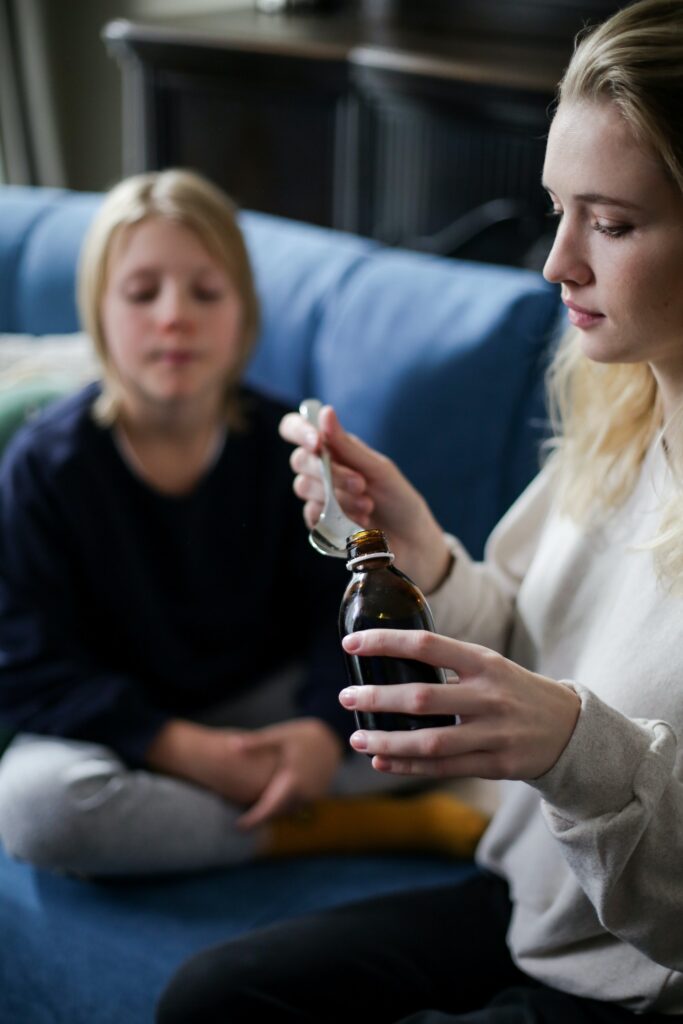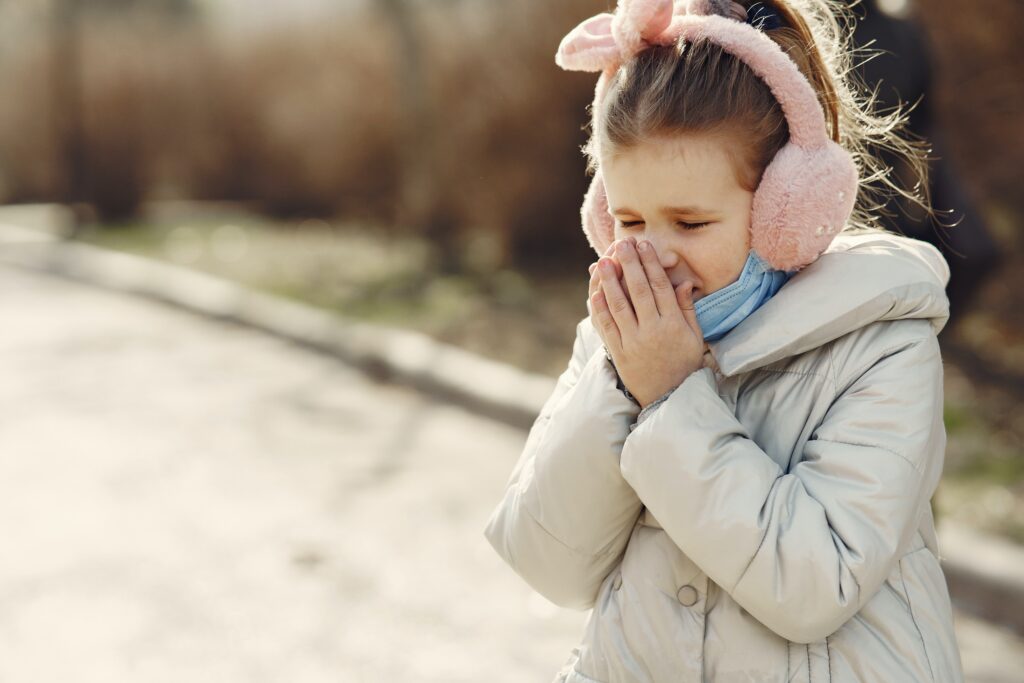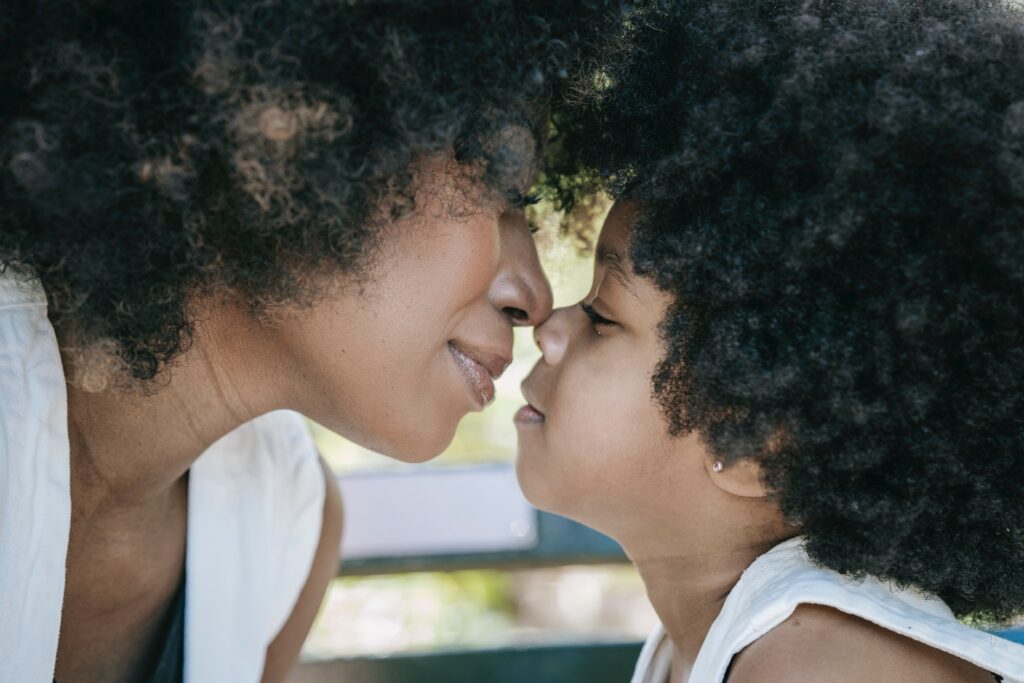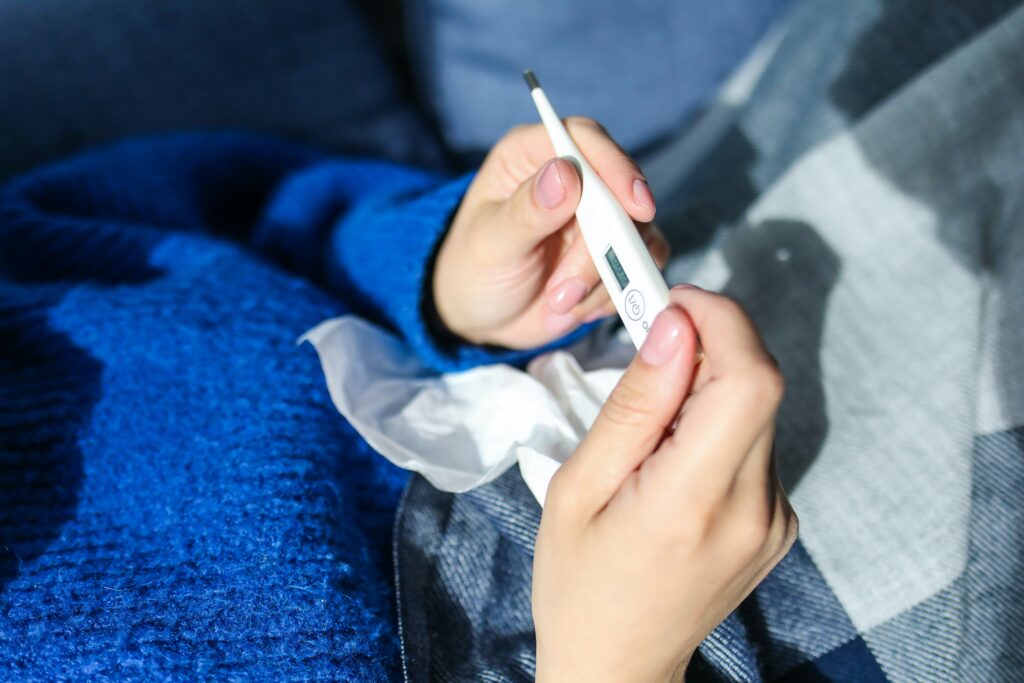“Immune Boost” is a popular buzzword these days, especially going into the third year of a global pandemic! Parents are eager to find ways to support their child’s immune system and help their families stay healthy! However, much of the popular advice circulating on the internet isn’t accurate or scientific. The good news is in addition to a healthy lifestyle; there is research to show certain supplements can help strengthen the immune system! Here we will talk about what you can do at home to help your family stay healthy!
Healthy lifestyle matters! The common wisdom that good nutrition, sleep, daily exercise, and low stress can help you stay healthy is true!
References:
CDC: 6 tips to Enhance Immunity
The compelling link between physical activity and the body’s defense system
Impact of Lifestyle on Health
We also recommend appropriate vaccines if your child is eligible since these prime immunity against certain infections. As wonderful as nourishing our children’s bodies and supporting their immune systems are, these things do not provide targeted protection against specific illnesses. Many vaccine-preventable diseases can cause severe illness and be life-threatening. Vaccines offer safe and effective protection. If you have concerns or questions, please discuss them with your health care provider. Also, don’t forget the importance of handwashing, especially during cold and flu season!
Vaccine Safety
Did you know not all immune support is the same? Studies show certain supplements help prevent common infections like colds and diarrheal illness and others help decrease the duration or severity of illnesses when they occur! Read on for more info and a breakdown of the supplements shown to help prevent certain infections and those that can help you recover faster!
Immune boosting supplements to help prevent colds and diarrheal illnesses
Vitamin D 
What is it?
Vitamin D is a fat-soluble vitamin that helps with calcium absorption. It also plays an important role in immune health, muscle function, and brain cell activity.
How does it boost the immune system?
Studies show regularly taking a Vitamin D supplement can reduce the number of colds you get, especially if you have low vitamin D levels!
How to get it:
- Food: It is hard to get enough Vitamin D from foods alone, but you can get it from fortified milk, cereal, and fatty fish.
- Sun: Your body can also make vitamin D when the skin is exposed to direct sunlight. However, it is difficult to make enough from this method alone as there are risks from unprotected sun exposure like sunburns and skin cancer. Therefore a supplement is usually your best bet.
- Supplements: Studies show good results taking doses of vitamin D ranging from 400 IU/day to 2000 IU/day. The specific amount depends on age and vitamin D level, so discuss with your healthcare provider for personalized recommendations.
Safety: Vitamin D supplementation is very safe for most people! Taking too much Vitamin D, however, can be a bad idea. It can lead to hypercalcemia, a condition in which too much calcium builds up in the blood, potentially forming deposits in the arteries or soft tissues. It may also predispose to painful kidney stones. Don’t take more than the recommended daily allowance unless advised by a physician (see table below.)
References:
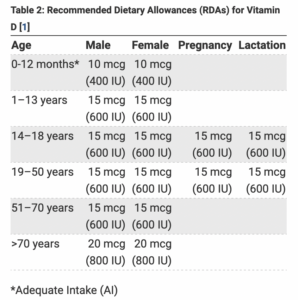
Table of Recommended Daily Allowance for Vitamin D
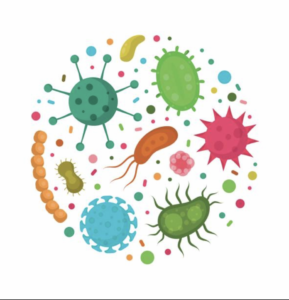 Probiotics:
Probiotics:
What is it?
Probiotics are live microorganisms that are the same or similar to the organisms that live in our bodies.
How does it boost the immune system?
Research shows Probiotics can reduce the number of colds, the duration of colds, the number of school absences, and antibiotic use! Many different probiotic products are available, and specific strains can provide different health benefits. Currently, there is the most evidence for Lactobacillus Rhamsnosus to prevent colds and diarrheal illnesses.
How to get it:
- Food: Probiotics are present in fermented foods like yogurt and can provide many benefits for health and a happy gut.
- Supplements: In order to get specific strains for particular health benefits, the best source is a supplement. A general recommendation is to choose probiotic products with at least 1 billion colony-forming units (cfus.) To help prevent colds and diarrheal illnesses, look specifically for products containing Lactobacillus Rhamsnosus.
Safety: Side effects are minor and include mild GI symptoms. Probiotics are safe for most people, but consult your physician if you or your child has a severe or chronic medical condition that affects the immune system.
References:
 Echinacea
Echinacea
What is it?
Echinacea is a flower and popular herbal remedy.
How does it boost the immune system?
Studies show echinacea may help prevent colds and reduce complications of colds such as pneumonia and ear infections.
How to get it:
- Supplements: You can get echinacea from many different types of supplements. Studies have looked at various doses and formulations of echinacea, making it hard to compare results.
Safety: Echinacea is safe for most people, but there is a slight risk of an allergic reaction or rash.
References:
Immune boosting supplements to help recover faster
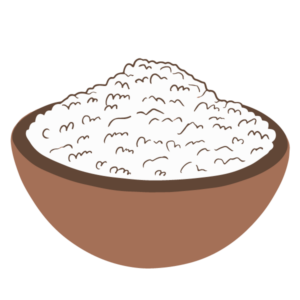 Zinc:
Zinc:
What is it?
Zinc is a mineral and an essential nutrient, meaning the body can’t store it and must get it in our diet or from supplements. It plays a role in many physiological processes, including immune function.
How does it boost the immune system?
Research shows that taking Zinc may lower the number of colds and pneumonia. In addition, when taken within 24 hours of the start of symptoms, it also decreases the duration and severity of the common cold!
How to get it:
- Food: Foods like meat, shellfish, and legumes contain Zinc.
- Supplements: Some studies show the best results with 20mg a day supplement for immune benefits.
Safety: Zinc is safe for most people! However, side effects can include mild GI upset and bad taste. In addition, we recommend avoiding intranasal forms like nasal sprays or swabs because they have caused permanent loss of smell in some people.
References:
 Elderberry:
Elderberry:
What is it?
Elderberry is a fruit from the Elderberry Tree.
How does it boost the immune system?
Studies have shown promising evidence that Elderberry can shorten the length and severity of cold and flu symptoms.
How to get it:
- Directly: You could consume Elderberries directly with likely the same benefits. However, certain parts of the plant can be toxic and cause stomach upset, so proper preparation is important for safety.
- Supplements: Supplements are most likely the most efficient and safest way to get immune benefits. Many elderberry products are now available. Studies have included a range of doses, but most have shown the best results with 600 – 1000mg a day.
Safety: Elderberry is safe for most people! No harmful effects have been reported from taking Elderberry supplements. However, as mentioned, certain parts of the plant can be toxic. If it is prepared improperly or if too much is consumed, it can cause GI symptoms.
References:
 Vitamin C:
Vitamin C:
What is it?
Vitamin C is an essential vitamin meaning the body can’t store it, so you must get it from your diet or supplements. It is an antioxidant and plays a vital role in immune health, healing, and building blood vessels, cartilage, and bone.
How does it boost the immune system?
Studies show Vitamin C can decrease the duration and severity of cold symptoms.
How to get it:
- Foods: Vitamin C is found in citrus fruits, berries, potatoes, tomatoes, peppers, cabbage, Brussels sprouts, broccoli and spinach.
- Supplements: It is possible to get adequate Vitamin C from a diverse, healthy diet. However, you may be able to get extra immune benefits if you supplement your intake. Studies have shown doses of 1-2g a day have the best results.
Safety: Vitamin C is considered safe for most people; however, high doses can cause digestive distress like diarrhea, nausea, and abdominal cramps.
References:
 At ZenOsa we are committed to using science to create natural remedies that actually work! For example, our natural cough syrups contain Elderberry, Zinc, and Vitamin C, all shown to help you recover faster from colds and the flu! We included vitamin D as well since we are more likely to be low in the winter months, and a little boost may help prevent recurrent infections. We wanted to include all of the most beneficial ingredients in one product, so you don’t have to give your child multiple things! Check them out here!
At ZenOsa we are committed to using science to create natural remedies that actually work! For example, our natural cough syrups contain Elderberry, Zinc, and Vitamin C, all shown to help you recover faster from colds and the flu! We included vitamin D as well since we are more likely to be low in the winter months, and a little boost may help prevent recurrent infections. We wanted to include all of the most beneficial ingredients in one product, so you don’t have to give your child multiple things! Check them out here!
And we have more good news; in the pipeline at ZenOsa are our new daily immune boost supplements for kids and babies to help them stay healthy! They include science-backed ingredients that help prevent common illnesses like colds and stomach bugs. These include probiotics (Lactobacillus Rhamsnosus,) Zinc, Echinacea, and Vitamin D. We hope to launch this fall, so make sure you’re on our email list and stay tuned!


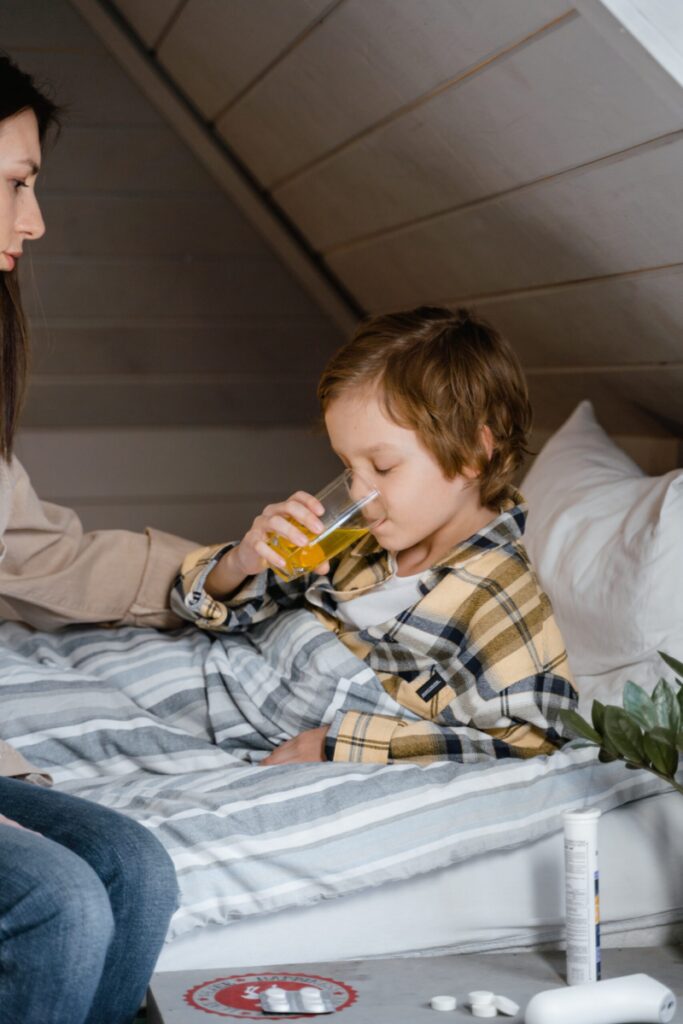
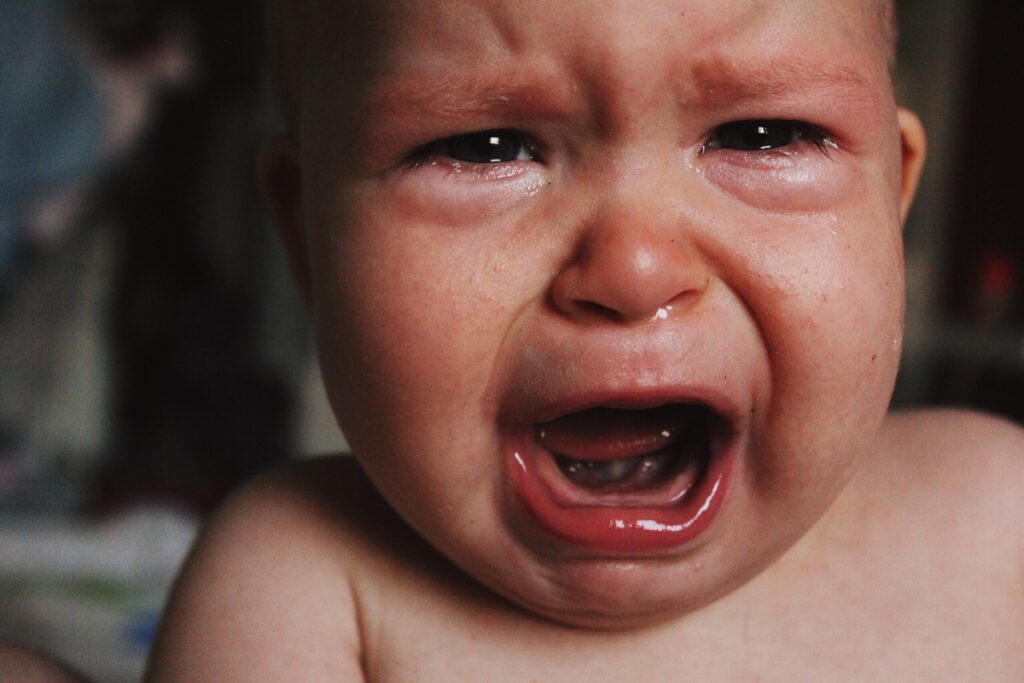




 Probiotics:
Probiotics: Echinacea
Echinacea Zinc:
Zinc: Elderberry:
Elderberry: Vitamin C:
Vitamin C:  At
At 